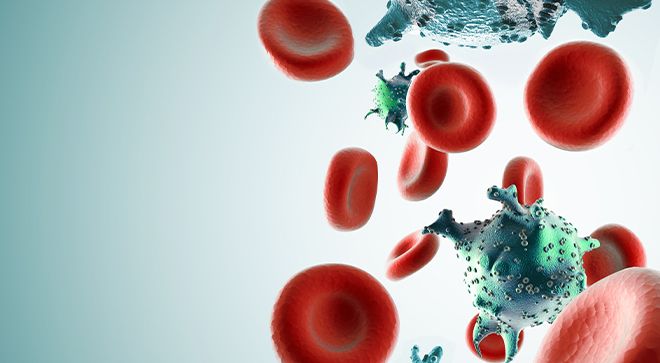Patients with chronic lymphocytic leukemia (CLL) or small lymphocytic lymphoma (SLL) may be less likely to switch treatments and receive a subsequent therapy compared with those treated with Calquence (acalabrutinib) and Imbruvica (ibrutinib), according to findings from a real-world study.
Data presented at the 2024 Society of Hematologic Oncology (SOHO) Annual Meeting showed that irrespective of whether patients were treated with a BTK inhibitor in the first or second line, the switching rate at 60 days or less and 61 to 89 days was lower for patients receiving Brukinsa (zanubrutinib) compared with those receiving Calquence and Imbruvica.
Study Highlights:
- Patients with CLL or SLL treated with Brukinsa may be less likely to switch treatments compared to those on Calquence or Imbruvica.
- Brukinsa is a BTK inhibitor, a type of drug that targets cancer cells.
- The study suggests that Brukinsa might be a more effective and durable treatment option for patients with CLL or SLL.
Of note, BTK inhibitors are a class of drugs that targets an enzyme that is important in the development and function of B cells, which helps the body defend itself against infections. Blocking this enzyme can disrupt signals that help cancer cells grow and survive.
In the first-line setting, the rate of patients switching therapies before 90 days was 10.2% for Brukinsa (157 patients) compared with 20.5% for Calquence (1,238 patients) and 15.9% for Imbruvica (1,421 patients). In the second-line setting, the switch rate before 90 days was 7.5% for Brukinsa (107 patients), 13.2% for Calquence (672 patients), and 21.1% for Imbruvica (474 patients).
“This study highlighted the real-world advantages of [Brukinsa] compared [with] other BTK inhibitors in patients with CLL/SLL,” lead study author Dr. Javier Pinilla-Ibarz and colleagues, wrote in a poster presentation of the data. “Future studies with extended follow-up are necessary to facilitate evaluation of emerging therapies and to assess long-term real-world outcomes.”
Pinilla-Ibarz is a senior member and head of the Lymphoma Section in the Department of Malignant Hematology at Moffitt Cancer Center in Tampa, Florida.
The retrospective study evaluated real-world switching and sequencing to next-line therapies among patients with CLL or SLL initiating BTK inhibitors in the first-line or second-line setting.
Investigators gathered data for patients at least 18 years of age with CLL or SLL who initiated treatment with Calquence, Imbruvica or Brukinsa.
In the study, a total of 2,816 patients initiated first-line BTK inhibitor therapy; 1,253 patients began second-line treatment. In the first-line setting, Imbruvica was the most frequently used BTK inhibitor (50.5%), followed by Calquence (44%) and Brukinsa (5.6%). In the second-line setting, Calquence was most commonly used (53.6%), followed by Imbruvica (37.8%) and Brukinsa (8.54%).
Demographic and clinical characteristics were assessed at the start of the study, and study authors noted that there were no significant differences in age, sex, payer type or Rai stage (a system to classify the severity of CLL) among the three cohorts. The median follow-up duration in the first-line setting was 123 days for Brukinsa, 406 days for Calquence and 637 days for Imbruvica. In the second-line setting, median follow-up durations were 133 days for Brukinsa, 503 days for Calquence and 524 days for Imbruvica.
Treatment switching was measured by identifying patients who initiated another treatment within the same line or advanced to the next line of therapy within 90 days.
Additional data showed the switching rates before 60 days in the first-line setting were 10.2% for Brukinsa, 17.1% for Calquence and 13.1% for Imbruvica. The respective switching rates from 61 to 89 days were 0%, 3.4% and 2.5%. In the second-line setting, the switching rates before 60 days were 7.5% for Brukinsa, 10.7% for Calquence and 17.1% for Imbruvica. The switching rates from days 61 to 89 were 0%, 2.5% and 4%, respectively.
The proportion of patients who received their next line of therapy at 180 days was lowest for those treated with Brukinsa. In the first-line setting, 13.9% of patients treated with Brukinsa received next-line therapy by day 180 compared with 24.5% of patients treated with Calquence and 21.1% of patients treated with Imbruvica. In the second-line setting, these rates were 9.1% for Brukinsa, 18.6% for Calquence and 29.2% for Imbruvica.
The authors noted that the study was limited to a United States–based population, which may not be applicable to all patient populations. They also explained data may be limited by the real-world nature of the study.
For more news on cancer updates, research and education, don’t forget to subscribe to CURE®’s newsletters here.





